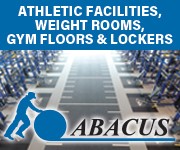All forms of daylighting typically work toward the same goal – allowing natural light to illuminate the interior of a building. Windows and wall systems are effective for some rooms, but impractical or impossible to incorporate into others.
Skylights can allow sunlight to reach otherwise inaccessible spaces, but are sometimes limited because of multiple floors or structural restrictions. While a building’s design, orientation, and end use often dictate which system is most effective for a space, evaluating which glazing material will work best for the application is equally important. While each glazing material listed below has far too many attributes to cover fully in this article, let’s take a quick look at each, touching on some benefits, limitations and their most effective application.
Glass
Glass is perhaps the most immediately recognizable and common glazing material available for daylighting systems – and for good reason. Glass is fairly durable, is available with a wide variety of films for light and UV control, comes in numerous configurations and styles (including specialty options), and offers eyecatching views to the outdoors. It is also the longest lasting glazing material available for skylights and wall systems, often touting lifespans over 50 years with regular maintenance.
On the flipside, glass is heavy compared to most other glazing materials and demands significant structural support which may increase material and installation costs. Glass can also be less thermally efficient (depending on the configuration) than other materials, and interior and exterior shading devices may be needed to control direct penetration of sunlight-add-ons which can add to the overall price of the system. And while their durability is impressive, keep in mind that glass skylights and wall systems generally need significant servicing to replace worn gaskets and other materials about halfway through their lifespan.
That said, if dramatic impact, views and ventilation control are key requirements for a space, glass is an excellent choice. When used in skylight configurations, glass can be an effective tool to mark an entrance to a facility or welcome visitors. When used in wall systems, glass allows for maximum light transmission. While this can cause problems for south-facing areas, a long clerestory section positioned along a north-facing wall can provide plentiful indirect light for hallways, libraries classrooms and athletic facilities.
Translucent FRP Panels
Translucent Fiberglass Reinforced Polymer (FRP) panels can be an effective alternative to glass glazing for many applications. The panels are constructed of two fiberglass reinforced sheets bonded to an aluminum grid core. They are lightweight, can be installed quickly, and provide built-in light control that allows them to efficiently diffuse direct light and eliminate glare and hot-spots. They also feature high thermal performance, as they allow for the ability to add varying densities of insulation for improved U-factors.
By their makeup, translucent FRP panels don’t allow for views to the outside, but both fixed and operable windows can be incorporated with the panels for a mix of light control, views and ventilation control if the space demands it. One of the other main aesthetic qualities of translucent FRP panels is their grid core, which supports the face sheets.
While the geometric grid patterns blend in well to many designs, they are sometimes be in conflict with other exterior aesthetics. Because of this, panels for wall systems can often be constructed with only the vertical grid member, giving the panels a look that’s similar to channel glass.
Translucent FRP systems have a slightly shorter lifespan than glass systems (generally 25-30 years), but longer than some less expensive options, and are a good blend of cost and durability. They are also available in a wide variety of configurations including blast and explosion release configurations, hurricane protection systems, and colored insulation for a stained glass look.
If light control and thermal performance are key, translucent FRP panel systems are an excellent choice. They can be highly beneficial in libraries and computer rooms where glare and hot-spots can cause havoc, and in common areas where direct sunlight can lead to excessive solar heat gain.
Athletic training facilities also benefit from glare-free light, with the added benefit of privacy as the panel’s translucency blocks any direct line of sight into the building. Translucent FRP panels are also effective in canopies and awnings as they provide shelter from the elements while still allowing light to create an inviting space underneath.
Polycarbonate Multi-wall
If glass is too heavy and costly, and translucent FRP systems aren’t right for your project, consider polycarbonate multi-wall. Like the name suggests, this type of glazing is made up of multiple-walled extruded polycarbonate panels that can be used in skylight, wall and canopy configurations.
Like translucent FRP panels, one of the main benefits of polycarbonate multi-wall is its ability to diffuse natural light (this varies depending on the material color chosen). It is also very lightweight, durable, and impact resistant, and offers a variety of color and size options to control light transmission and thermal performance. Polycarbonate multiwall is easy to install as well, as panel sections in many configurations simply snap together to fill the opening.
While durable, polycarbonate multi-wall can be somewhat easily punctured by sharp objects and damaged by harsh chemicals, making placement of the glazing an important part of ensuring the long-term durability of the system. The lifespan of polycarbonate multi-wall is also the shortest of the materials discussed, though the cost is generally lower as well.
For a simple clerestory, skylight, or canopy, polycarbonate multiwall is an economical choice. Its impact-resistant properties also make it a good choice for athletic facilities and other impact-prone areas, and its light weight makes it useful for retrofit applications.
What’s The Best Solution?
Which glazing material is right for your next retrofit or new construction project? First consider the application-does the space demand soft, diffuse light, or would it benefit from a dramatic view or localized ventilation control? Also carefully review the benefits and drawbacks of each material, from lifespan to warranties to durability.
And don’t forget that you’re not always limited to one glazing choice; mixed glazed solutions are becoming more and more popular and combine the benefits of multiple materials. The best advice is to solicit the opinion of the daylighting manufacturers you’re considering, as they will be able to suggest the best material options for your project, and work with you to create a custom configuration that will fit both your needs and budget.










